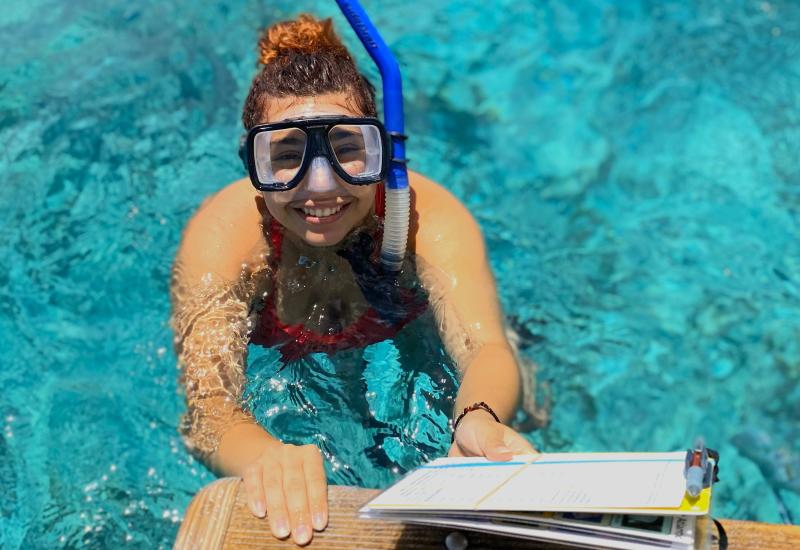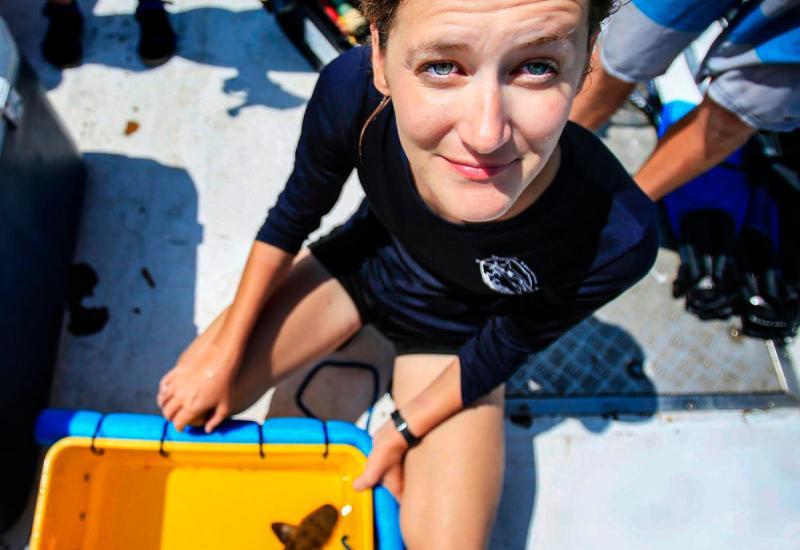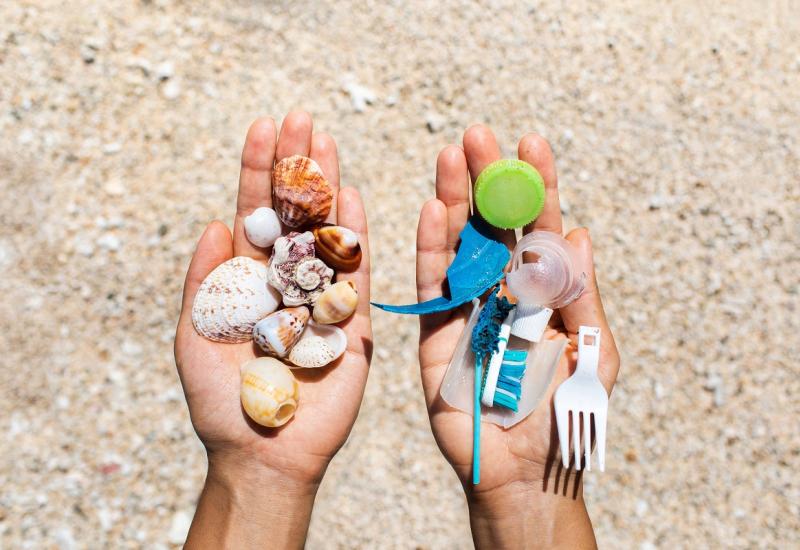Four Critical Marine Habitats You Should Care About
These four critical marine habitats—sea grass, sand, sargassum, mangroves—nurture ocean life as we know it. Their fate hangs in the balance, imperiled largely by humans.
SEA GRASS
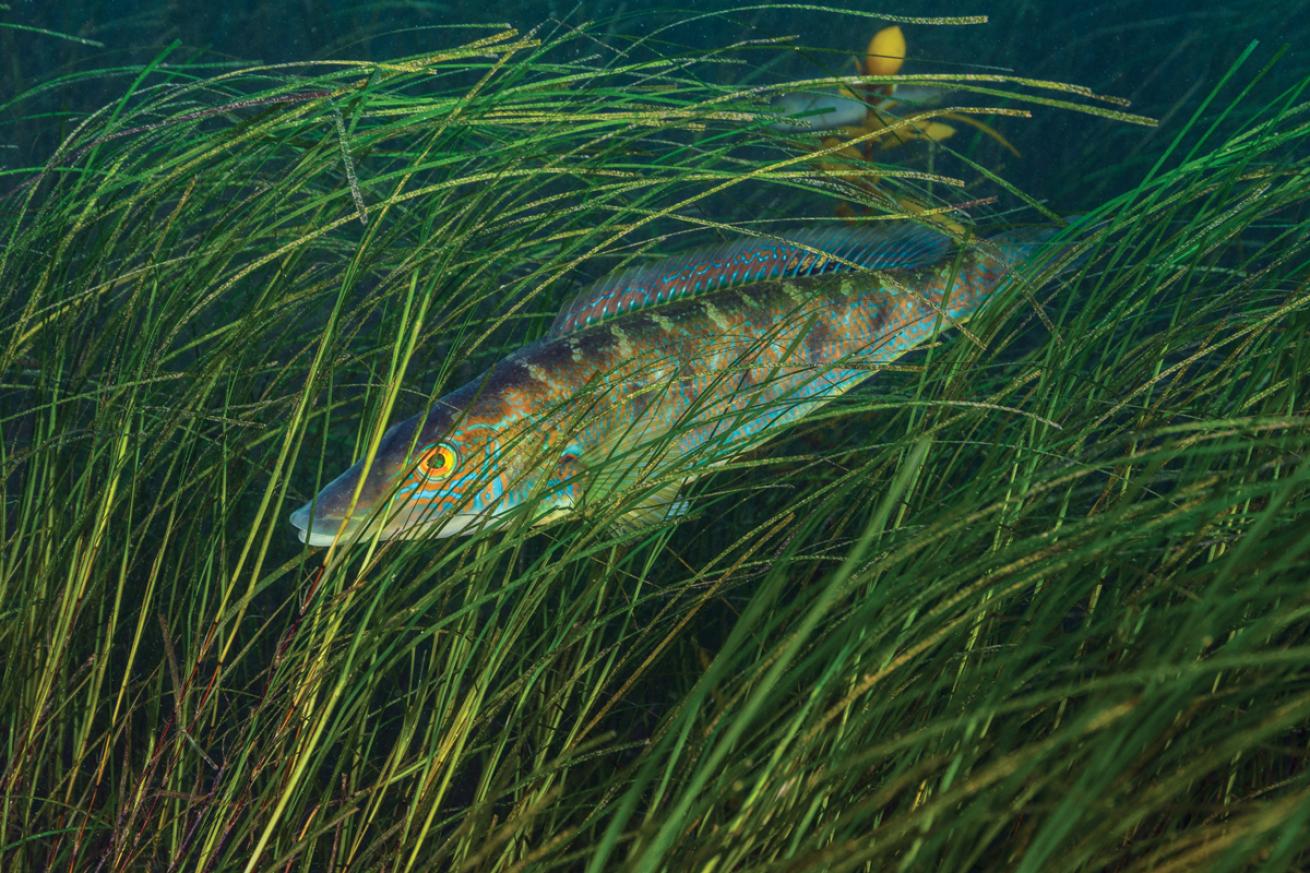
Brandon ColeA blue weed whiting hides in sea grass in southern Australia.
Sea grass grows in clear, shallow waters in bays, lagoons and estuaries, forming dense beds or meadows that extend for miles. A single acre can support nearly 40,000 fish and 50 million small invertebrates, such as lobsters and shrimp. For divers, sea grass beds offer good places to spot manatees, dugongs and green sea turtles.
Holly Binns, with the Pew Charitable Trusts, calls these flowering plants one of Earth’s most valuable and important ecosystems. Unfortunately, sea grass meadows continue to disappear worldwide due to light-blocking structures and pollution, damage from boat propellers and anchors, development, and dredging.
Traveling divers can help restore sea grass and offset their own carbon footprint at the same time through Sea-Grass Grow, an initiative of The Ocean Foundation (oceanfdn.org) that plants sea grass and mangroves. Sea grass is up to 35 times more effective than rainforests in taking up and storing carbon, occupying one-tenth of 1 percent of the seafloor but representing 11 percent of all carbon stored in the ocean, says the nonprofit’s Jason Donofrio. You can calculate your own trip offset at seagrassgrow.org. “It’s much cheaper than people think,” Donofrio says—about $20 per ton, with a typical trip hitting .5 to 1.5 tons.
SAND
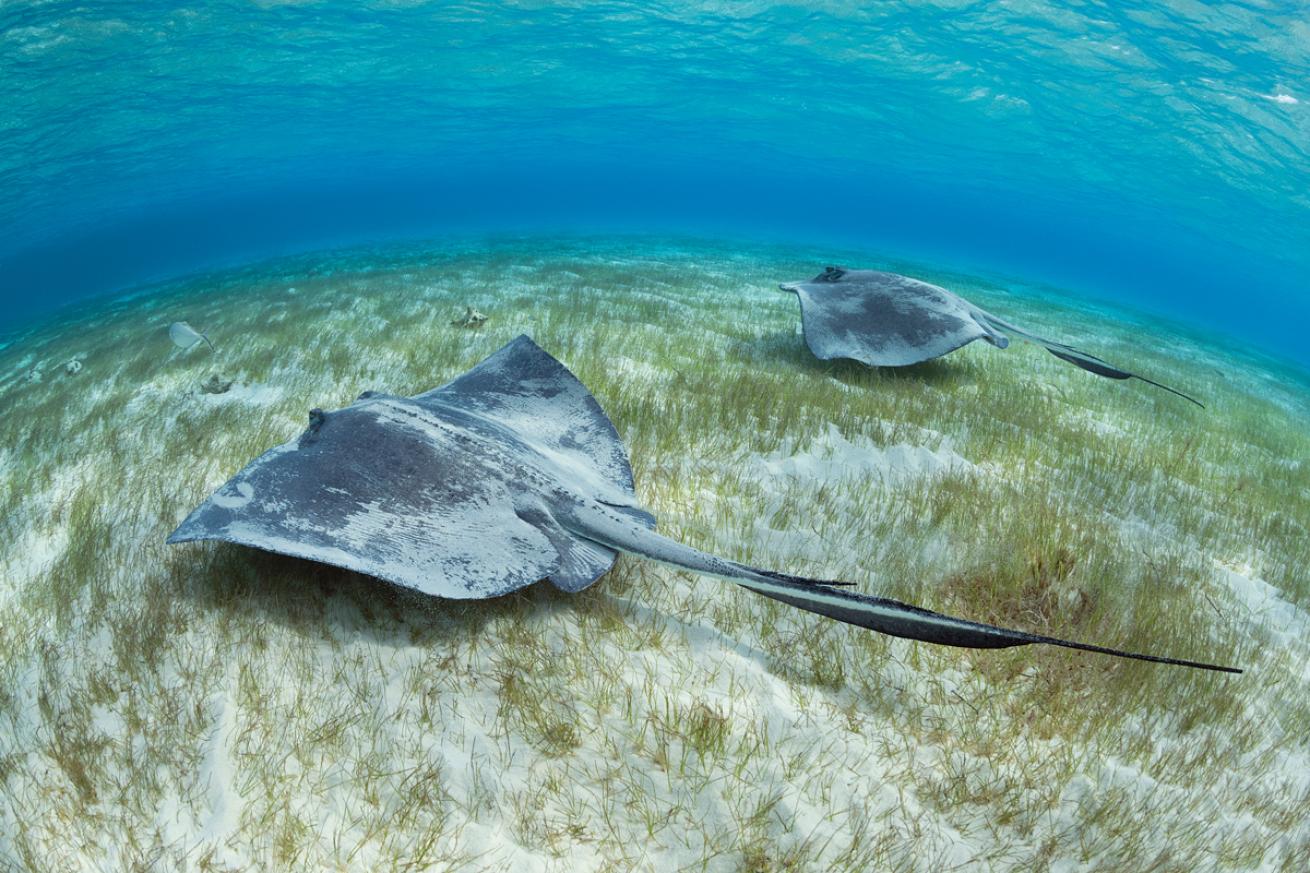
Brandon ColeSouthern stingrays, like these in the Cayman Islands, bury themselves in the sand during periods of inactivity.
Sand seems like an endless resource, its uncountable grains a common analogy for abundance. Yet humans increasingly “mine” sand to make concrete and glass, extract oil and gas, and replace beaches. This damages habitats around the world, including coastal beaches and sandy ocean bottom.
Beach sand houses microorganisms, crabs, clams, and nesting birds and sea turtles. Sea stars, sand dollars, sea cucumbers, conchs and other critters live on sandy ocean floors, where flounder, rays and other marine life hang out, and fish and sharks come to feed. Machinery used to collect sand kills these creatures; removing sand destroys their homes. Sand placed on beaches smothers and kills most things living there, and studies have shown that “nourished” beaches are poor substitutes for the natural ecosystems they replace.
The tons of plastic waste entering oceans every year also affect sand. Plastic fragments mix with grains of sand and change its physical properties, such as the amount of water it absorbs and its temperature. On beaches, these changes affect the success of sea turtle nests, says Katie Swanson at the University of Texas Marine Science Institute. Plastic also absorbs toxic chemicals and releases them back into the sediment when it degrades. Sand isn’t so endless after all.
SARGASSUM
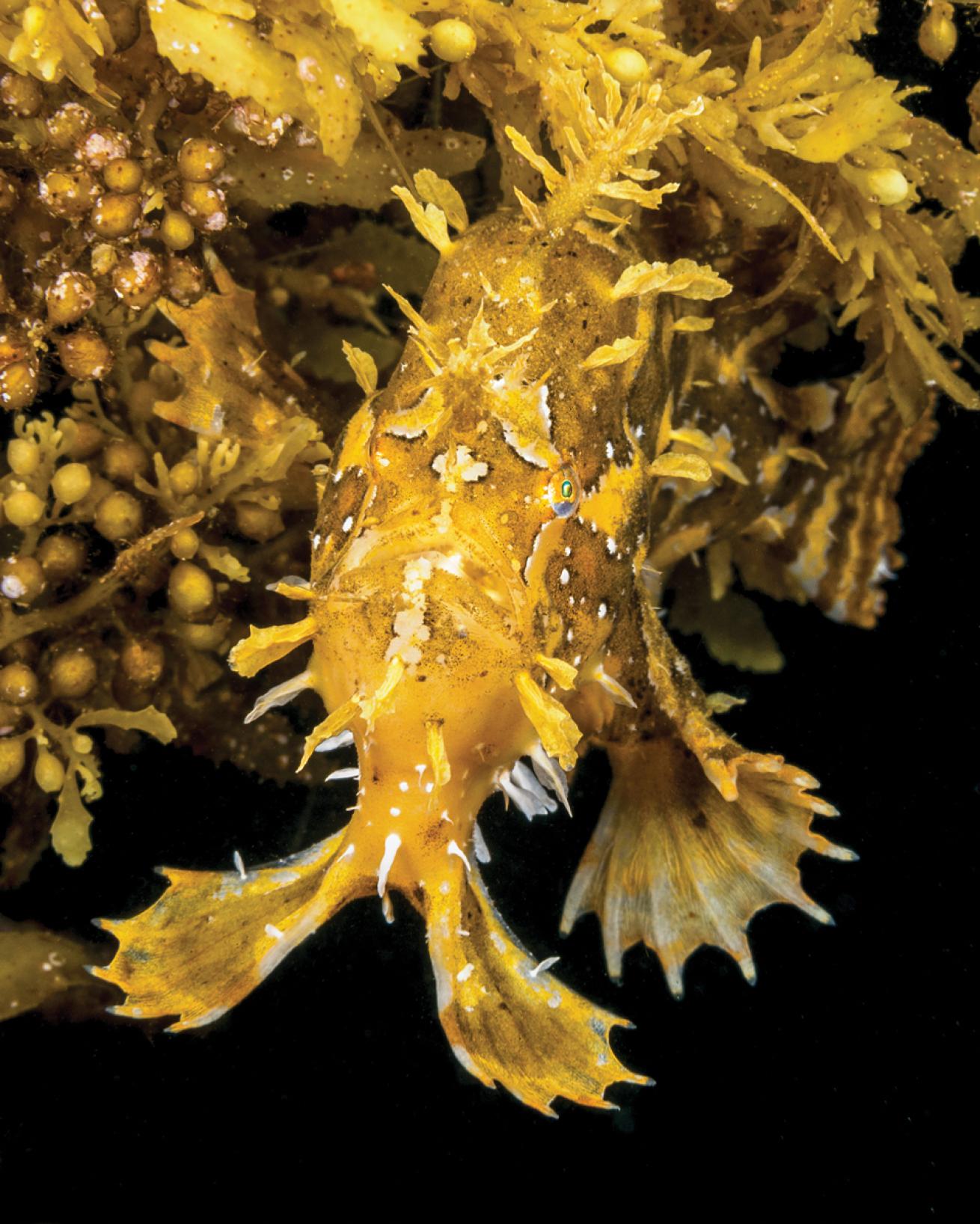
Brandon ColeA sargassum frogfish blends in with its namesake seaweed in Indonesia.
Sargassum algae floats on the surface of the Gulf of Mexico and North Atlantic Ocean. It forms mats that collect into the more than 1.4 million-square-mile Sargasso Sea in the Atlantic.
Like oases in the open ocean, sargassum mats provide important habitat, food and breeding grounds for an array of marine life, including fish, sea turtles and birds. Some liken these mats to reefs as diving spots. When mats lose their buoyancy and sink, they feed creatures in the deep; washed ashore by wind and currents, sargassum feeds beach denizens and helps build dunes. But in 2011, sargassum began showing up in large quantities, called blooms, and at unexpected and unwelcome locations in the tropical Atlantic and eastern Caribbean Sea. These blooms wash ashore and rot on beaches, creating an unpleasant smell and sometimes even smothering marine life. In summer 2019, scientists first reported the formation of what they called the Great Atlantic Sargassum Belt, which continues to grow.
One cause may be nutrients entering the ocean from increased river flooding due to climate change.
MANGROVES
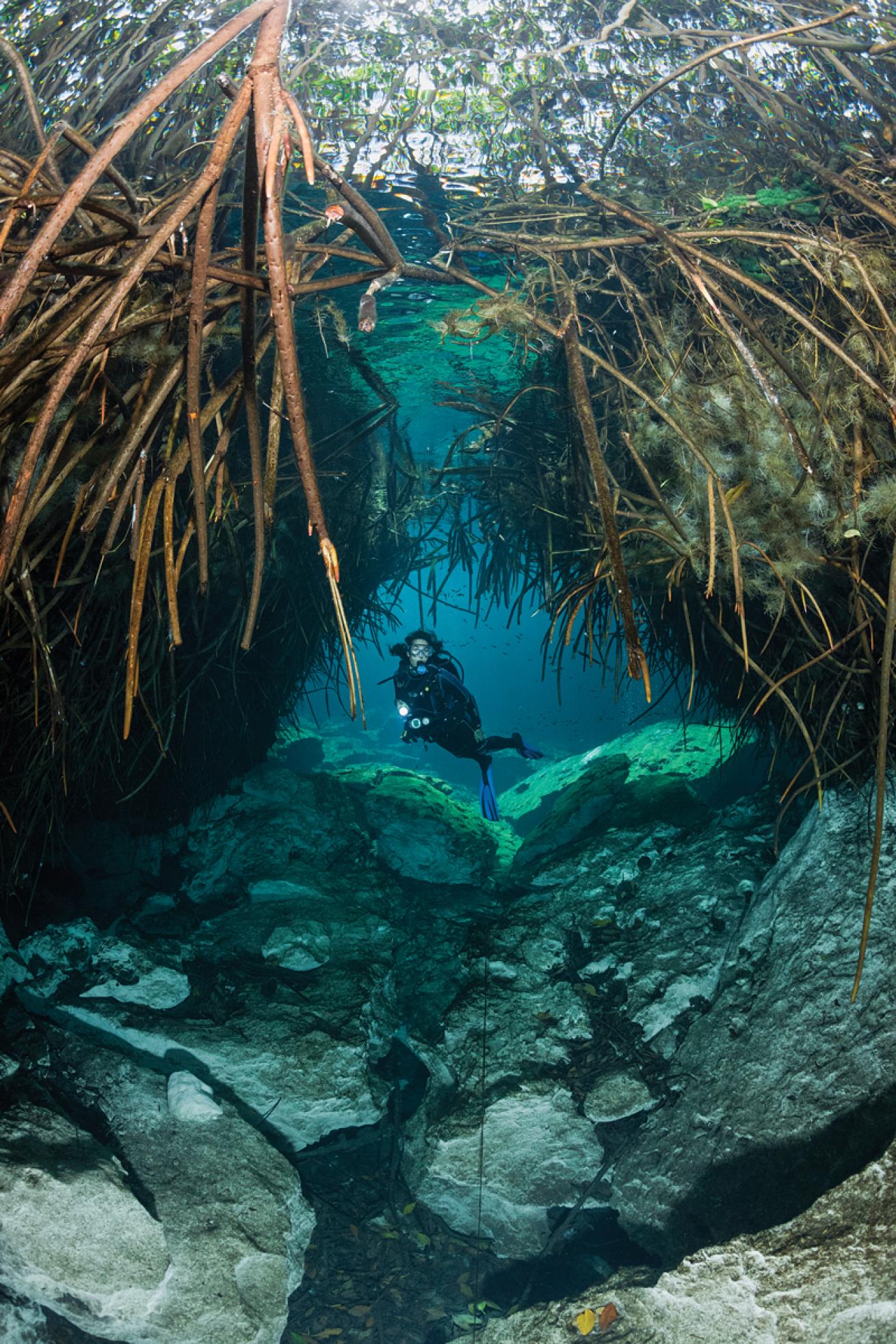
Brandon ColeMangrove roots stretch into a cenote in Mexico.
In clear, sun-streaked water among tangles of protruding roots, a variety of fish and other organisms thrive. Mangrove forests attract megafauna, including manatees, dolphins, crocodiles, alligators, sea turtles, sharks and rays, to feed, shelter and breed. These small trees and shrubs grow in the intertidal zone—coastal areas underwater at high tide but exposed to air at low tide—and tolerate salty and brackish waters. Indonesia has the most mangrove habitat, followed by Brazil, Australia, Nigeria and Mexico. Mangrove roots also stabilize coastlines, providing some $65 billion a year in flood protection.
We lose about 1 percent of mangrove habitat each year to aquaculture, climate change and coastal development, including agriculture, with palm oil plantations and rice paddies accounting for 38 percent of mangrove loss from 2000 to 2012. At this rate, mangroves could all but disappear by the year 2100. Many of the marine species that depend on them would disappear too, leaving snorkelers and divers with little to look at.


